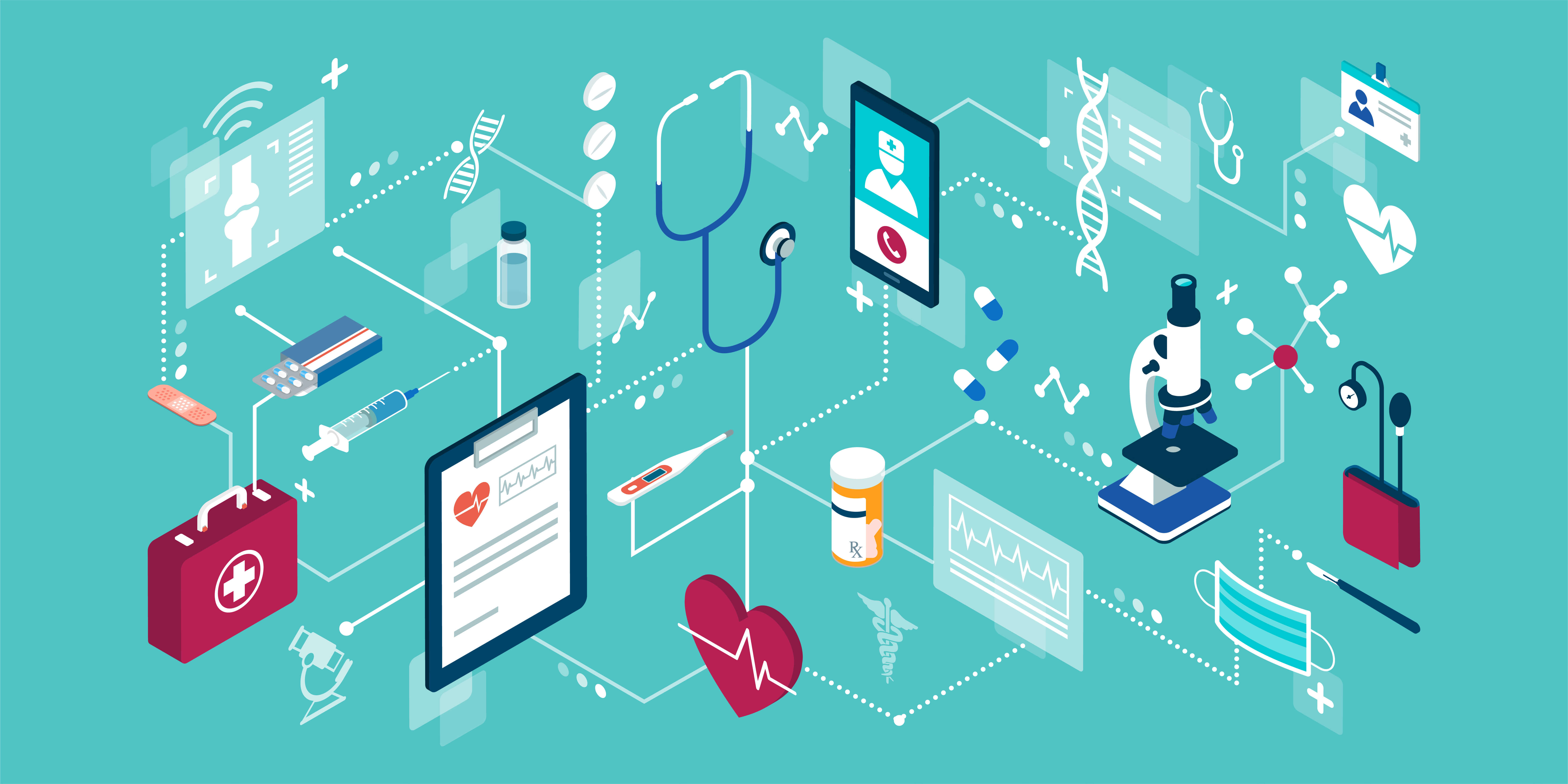
Allies in Allied Healthcare: What You Need to Know About Healthcare Disparities
What are health care disparities?
Health and health care disparities refer to differences in health and health care between groups that are closely linked with social, economic, and/or environmental disadvantage. Disparities occur across many dimensions, including race and ethnicity, socioeconomic status, age, location, gender, disability status, and sexual orientation. Persistent racial disparities in health coverage, chronic health conditions, mental health, and mortality are pervasive issues in the United States. The disparities stem from decades of systematic inequality in the economy, housing, and our health care system. (1)
Who is affected?
Hispanics, Blacks, and American Indians, and Alaska Natives are more likely than Whites to delay or go without needed care. In 2018, 17% of Black adults and 21% of Hispanic adults did not receive care or received delayed care due to cost. That same year, 25% of Black adults and 24% of Hispanic adults received delayed care due to a range of barriers to accessing care. (2)
In addition, some of these groups are at higher risk for health conditions and experience poorer health outcomes compared to other groups. For example, Blacks and American Indians and Alaska Natives are more likely than Whites to report a range of health conditions, including asthma and diabetes; American Indians and Alaska Natives also have higher rates of heart disease compared to Whites. (2)
Addressing disparities in health and health care is important not only from an equity standpoint, but also for improving health more broadly by achieving improvements in overall quality of care and population health.
Why is it important?
Addressing disparities in health and health care is important not only from an equity standpoint, but also for improving health more broadly by achieving improvements in overall quality of care and population health. Additionally, health disparities are costly. Analysis estimates that disparities amount to approximately $93 billion in excess medical care costs and $42 billion in lost productivity per year, as well as economic losses due to premature deaths.
It is increasingly important to address health disparities as the population becomes more diverse. It is projected that people of color will account for over half (52%) of the population in 2050, with the largest growth occurring among Hispanics. (2)
- Centers for Disease Control and Prevention, “Health of Black or African American non-Hispanic population,” available at https://www.cdc.gov/nchs/fastats/black-health.htm
- Artiga, S., Orgera, K., & Pham, O. (2020, March 4). Disparities in Health and Health Care: Five Key Questions and Answers.
Health Care Coverage
For the second year in a row, the number of uninsured increased. In 2018, 27.9 million nonelderly individuals were uninsured, an increase of nearly 500,000 from 2017. Often times this leads to uninsured and underinsured individuals not going in for preventative treatment, or for known diagnoses. (1)
Most uninsured people are comprised of low-income families that have at least one adult working in the family. Adults are more likely to be uninsured than children. People of color are at a higher risk of being uninsured versus non-Hispanic Whites. (2)
Why are people uninsured?
There are many reasons that people are uninsured, but the main one is cost. In 2018, 45% of uninsured adults said they did not have health care insurance because the cost was too high. Many adults do not have access to coverage through a job, and Medicaid did not expand in many states, thus leaving many ineligible for Medicaid benefits. Many families are not able to afford insurance and do not receive benefits through their employment but make just enough above the cutoff for any financial assistance. (3)
We can also assist by connecting our uninsured, or underinsured patients with a social worker or a representative from the Department of Health and Human Services in their area to discuss additional resources for local healthcare.
How can we as providers help?
We can confirm that the patient is truly uninsurable, or if there are options that can still be explored. Help them to verify that they are not eligible with Medicaid or the Medically Indigent Adult Program. Possibly, they have not tried recently or were missing a pay stub and do qualify for services. We can also assist by connecting our uninsured, or underinsured patients with a social worker or a representative from the Department of Health and Human Services in their area to discuss additional resources for local healthcare. (4)
- Tolbert, J., Singer, N., & Orgera, K. (2019, December 13). Key Facts About the Uninsured Population. Retrieved from https://www.kff.org/uninsured/issue-brief/key-facts-about-the-uninsured-population/
- Kaiser Family Foundation. 2019 Employer Health Benefits Survey (Washington, DC: Kaiser Family Foundation, October 2019), https://www.kff.org/health-costs/report/2019-employer-health-benefits-survey/.
- State Health Facts. “Marketplace Enrollment, 2014-2019.” Kaiser Family Foundation, https://www.kff.org/health-reform/state-indicator/marketplace-enrollment/.
Forester RA, Heck RJ. What you can do to help your uninsured patients. Fam Pract Manag. 2009 Sep-Oct;16(5):21-4. PMID: 19751039.

Access and Utilization of Healthcare
Transportation Access
Often our patients who are uninsured and underinsured do not have access to reliable transportation. This can be especially true if the patient lives in an area that does not offer public transportation, or the patient cannot independently access public transportation. These examples and others are transportation barriers that are also barriers to healthcare access.
These barriers lead to missed appointments, delayed care, and delayed or missed medication use. This may lead to poor management of acute and chronic illnesses, and thus poorer health outcomes overall. (1) Studies have found that transportation barriers impact health care access in as little as 3% of a population, and as much as 67% of a population. (2)
Language Barriers
Language barriers can pose many challenges for a patient that does not speak English to receive high-quality healthcare and to maintain patient safety. Language barriers can lead to miscommunications between the clinician and the patient and this can cause unequal treatment. (3) A recent study demonstrated that patients who do not speak the local language are disadvantaged in terms of access to healthcare services. Additionally, other studies have shown that patients who face language barriers demonstrate poor health outcomes when compared to patients that speak the local language. (4)
Literacy Levels
The US Department of Health and Human Services defines health literacy as “the degree to which individuals have the capacity to obtain, process, and understand basic health information needed to make appropriate health decisions” (5). Often, a patient may have low literacy and may not be able to understand a prescription label or written directions from a clinician about treatment. Low or limited health literacy skills are more prevalent among certain population groups and contribute to poor health outcomes. Several factors may influence an individual’s health literacy, including living in poverty, education, race and ethnicity, age, and disability. Adults living below the poverty level have lower health literacy than adults living above the poverty level. (6)
How can we as providers help?
Language
The first is to use plain language in both verbal and written communications. According to plainlanguage.gov, plain language should ensure that users can find what they need, understand what they find, and use what they find to meet their needs (9). In addition, three key elements to using plain language are: organizing information so the most important points come first, breaking complex information into understandable chunks, and using simple language and defining technical or medical terms (9).
Visuals
Second is the use of visual aids, such as illustrations, photos, graphics, and videos to help patients better understand health information. These are great tools to reinforce written or verbal health information. It is important to choose visuals that are culturally sensitive and linguistically appropriate to support your message.
Teaching Methods
Lastly, make sure you are using effective teaching methods to assess and reinforce the patient’s understanding (8). One way to do this is to ask open-ended questions to assess a patient’s understanding of written materials. You can also use the Teach-Back communication method to determine if a patient has understood your instructions and can repeat the information in their own words (10). Additionally, there is the “Show Back” method to demonstrate correct use when teaching a patient to use a device or perform a task. This is like Teach-Back, except that they are showing you that they understand by performing a task versus verbally explaining (8).
- Giambruno C, Cowell C, Barber-Madden R, Mauro-Bracken L. The extent of barriers and linkages to health care for head start children. Journal of Community Health. 1997;22(2):101–114.
- Branch LG, Nemeth KT. When elders fail to visit physicians. Medical Care. 1985;25(11):1265–1275.
- Floyd A, Sakellariou D. Healthcare access for refugee women with limited literacy: layers of disadvantage. Int J Equity Health 2017. Nov;16(1):195. 10.1186/s12939-017-0694-8
- Squires A. Evidence-based approaches to breaking down language barriers. Nursing2019 2017;47(9):34-40.
- U.S. Department of Health and Human Services, Office of Disease Prevention and Health Promotion. National action plan to improve health literacy. Washington (DC): Author; 2010
- Rudd RE. Health literacy skills of U.S. adults. Am J Health Behav. 2007;31(Suppl 1):S8–18.
- Kutner M, Greenburg E, Jin Y, Paulsen C. The health literacy of America's adults: results from the 2003 national assessment of adult literacy. National Center for Education Statistics; 2006. Report No.: NCES 2006-483.
- Four Simple Strategies for Improving your Patients’ Health Literacy. (2019, September 30). Retrieved from https://acpdecisions.org/four-simple-strategies-for-improving-your-patients-health-literacy/
- Plain Language. (2010). Retrieved from https://plainlanguage.gov/about/definitions
- Always Use Teach Back! (2016). Retrieved from http://www.ihi.org/resources/Pages/Tools/AlwaysUseTeachBack!.aspx
Additional Allied Healthcare Resources:
- AMN Passport: Our all-in-one allied app for booking allied travel jobs.
- Refer-a-Friend: Make up to $2,000 per referral.



